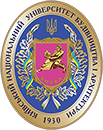Аннотації
27.06.2025
Нинішнє турбулентне економічне середовище в Україні, що характеризується високою інфляцією (15–20%), волатильністю обмінного курсу та нестабільністю енергопостачання (відключення електроенергії з імовірністю 0,7), створює значні проблеми для девелоперських компаній, що призводить до збільшення вартості проєктів (10–15% у 2024 році) та зниження попиту. Традиційних стратегій реагування недостатньо для вирішення цих проблем. У цьому документі обґрунтовується необхідність проактивного підходу до стратегічного управління в проєктах розвитку SMART, інтеграції цифрової трансформації (BIM, AI, IoT), акценту на стійкість та енергоефективність, а також адаптації до мінливих вимог ринку щодо доступного та екологічно чистого житла. Аналізуючи глобальні тенденції та специфічні умови в Україні, зокрема в контексті постконфліктної реконструкції (наприклад, Бучі), дослідження підкреслює обмеження поточних практик реагування та потенціал проактивного управління для підвищення конкурентоспроможності й адаптивності. Метою дослідження є розробка інноваційних механізмів розвитку програм компаній шляхом впровадження проактивного стратегічного управління. Воно досліджує такі методи, як планування сценаріїв на основі штучного інтелекту, ТРВЗ (теорія розв'язання винахідницьких задач) з автоматизацією штучного інтелекту, гнучке управління з оптимізацією штучного інтелекту, метод критичного ланцюга з Інтернетом речей та штучним інтелектом, а також управління BIM за допомогою аналітики штучного інтелекту. Крім того, у статті досліджено синергію, створену інноваціями в проєктах розвитку «розумного міста», на прикладах Києва (наприклад, ЖК «Фаїна») та запропоновано концептуальну модель проактивного управління ризиками та можливостями в таких проєктах у середовищі BANI (крихкому, тривожному, нелінійному, незрозумілому). Ефективність моделі демонструється через математичне представлення та її застосовність до унікальних викликів українського контексту, включаючи обмеження ресурсів і соціальну спрямованість.
The current turbulent economic environment in Ukraine, characterized by high inflation (15–20%), exchange rate volatility, and unstable energy supply (power outages with a 0.7 probability), poses significant challenges to development companies, leading to increased project costs (10–15% in 2024) and decreased demand. Traditional reactive strategies are insufficient to address these issues. This paper argues for the necessity of a proactive strategic management approach in SMART development projects, integrating digital transformation (BIM, AI, IoT), a focus on sustainability and energy efficiency, and adaptation to changing market demands for affordable and environmentally friendly housing. By analysing global trends and specific conditions in Ukraine, particularly in the context of post-conflict reconstruction (e.g., Bucha), the study highlights the limitations of current reactive practices and the potential of proactive management to enhance competitiveness and adaptability. The research aims to develop innovative mechanisms for development companies' programs through the implementation of proactive strategic management. It explores methods such as AI-driven scenario planning, TRIZ with AI automation, Agile management with AI optimisation, the Critical Chain Method with IoT and AI, and BIM management with AI analytics. Furthermore, the paper examines the synergy created by innovations in "smart city" development projects, using examples from Kyiv (e.g., Faina Town), and proposes a conceptual model for proactive risk and opportunity management in such projects within a BANI (Brittle, Anxious, Nonlinear, Incomprehensible) environment. The model's effectiveness is demonstrated through a mathematical representation and its applicability to the unique challenges of the Ukrainian context, including resource constraints and social focus.
1. Iansiti, M. (1995). Shooting the Rapids: Managing Product Development in Turbulent Environments. California Management Review, 38, 37 – 58. https://doi.org/10.2307/41165820.
2. Wang, W. (2021). The concept of sustainable construction project management in international practice. Environment, Development and Sustainability, 23, 16358 – 16380. https://doi.org/10.1007/s10668-021-01333-z.
3. Dröge, C., Calantone, R., & Harmancioglu, N. (2008). New Product Success: Is It Really Controllable by Managers in Highly Turbulent Environments? Journal of Product Innovation Management, 25, 272–286. https://doi.org/10.1111/J.1540-5885.2008.00300.X.
4. Chen, Y., Qiu, W., & Xiao, M. (2025). Influence mechanisms of digital construction organizations’ capabilities on performance: evidence from SEM and fsQCA. Engineering, Construction and Architectural Management. https://doi.org/10.1108/ecam-03-2024-0373.
5. Liu, Y. (2013). Sustainable competitive advantage in turbulent business environments. International Journal of Production Research, 51, 2821 – 2841. https://doi.org/10.1080/00207543.2012.720392.
6. Buganza, T., Dell’Era, C., & Verganti, R. (2009). Exploring the Relationships between Product Development and Environmental Turbulence: The Case of Mobile TLC Services. Journal of Product Innovation Management, 26, 308–321. https://doi.org/10.1111/J.1540-5885.2009.00660.X.
7. Calantone, R., Garcia, R., & Dröge, C. (2003). The Effects of Environmental Turbulence on New Product Development Strategy Planning. Journal of Product Innovation Management, 20, 90–103. https://doi.org/10.1111/1540-5885.2002003.
8. Pavlou, P., & Sawy, O. (2009). The 'Third Hand': IT-Enabled Competitive Advantage in Turbulence Through Improvisational Capabilities. IO: Productivity. https://doi.org/10.2139/ssrn.1557866.
9. Budiningsih, I., & Soehari, T. (2021). Strengthening Innovative Leadership in the Turbulent Environment. Leadership - New Insights [Working Title]. https://doi.org/10.5772/intechopen.100456.
10. Suikki, R., Tromstedt, R., & Haapasalo, H. (2006). Project management competence development framework in turbulent business environment. Technovation, 26, 723-738. https://doi.org/10.1016/J.TECHNOVATION.2004.11.003.
1. Iansiti, M. (1995). Shooting the Rapids: Managing Product Development in Turbulent Environments. California Management Review, 38, 37 – 58. https://doi.org/10.2307/41165820.
2. Wang, W. (2021). The concept of sustainable construction project management in international practice. Environment, Development and Sustainability, 23, 16358 – 16380. https://doi.org/10.1007/s10668-021-01333-z.
3. Dröge, C., Calantone, R., & Harmancioglu, N. (2008). New Product Success: Is It Really Controllable by Managers in Highly Turbulent Environments? Journal of Product Innovation Management, 25, 272–286. https://doi.org/10.1111/J.1540-5885.2008.00300.X.
4. Chen, Y., Qiu, W., & Xiao, M. (2025). Influence mechanisms of digital construction organizations’ capabilities on performance: evidence from SEM and fsQCA. Engineering, Construction and Architectural Management. https://doi.org/10.1108/ecam-03-2024-0373.
5. Liu, Y. (2013). Sustainable competitive advantage in turbulent business environments. International Journal of Production Research, 51, 2821 – 2841. https://doi.org/10.1080/00207543.2012.720392.
6. Buganza, T., Dell’Era, C., & Verganti, R. (2009). Exploring the Relationships between Product Development and Environmental Turbulence: The Case of Mobile TLC Services. Journal of Product Innovation Management, 26, 308–321. https://doi.org/10.1111/J.1540-5885.2009.00660.X.
7. Calantone, R., Garcia, R., & Dröge, C. (2003). The Effects of Environmental Turbulence on New Product Development Strategy Planning. Journal of Product Innovation Management, 20, 90–103. https://doi.org/10.1111/1540-5885.2002003.
8. Pavlou, P., & Sawy, O. (2009). The 'Third Hand': IT-Enabled Competitive Advantage in Turbulence Through Improvisational Capabilities. IO: Productivity. https://doi.org/10.2139/ssrn.1557866.
9. Budiningsih, I., & Soehari, T. (2021). Strengthening Innovative Leadership in the Turbulent Environment. Leadership - New Insights [Working Title]. https://doi.org/10.5772/intechopen.100456.
10. Suikki, R., Tromstedt, R., & Haapasalo, H. (2006). Project management competence development framework in turbulent business environment. Technovation, 26, 723-738. https://doi.org/10.1016/J.TECHNOVATION.2004.11.003.
